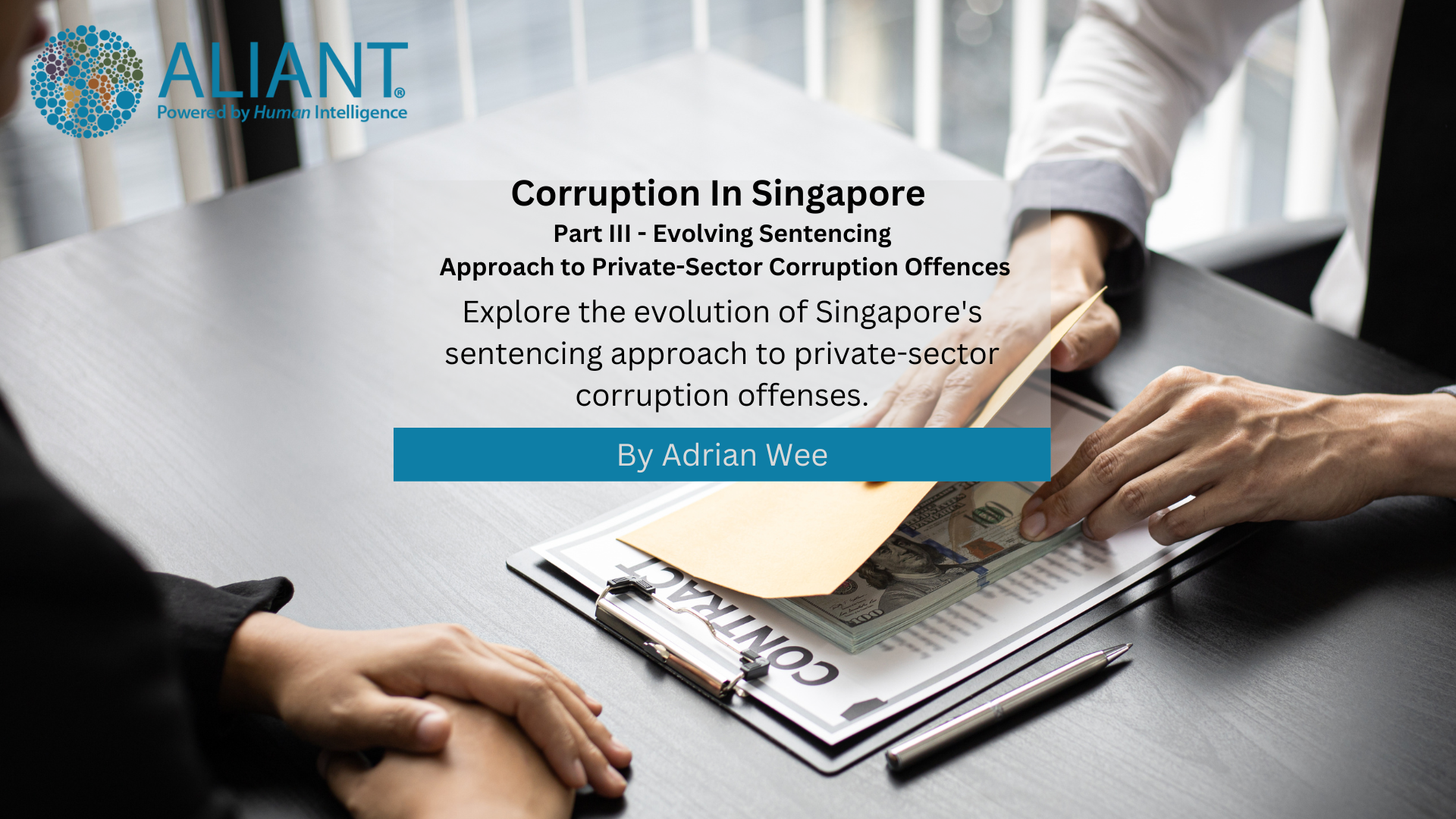Corruption in Singapore Part III – Evolving Sentencing Approach to Private-Sector Corruption Offences
In this final part of the Corruption in Singapore serries, I will explain Singapore’s stringent stand on corruption which has been a cornerstone of its corporate governance system for many years. This dedication to transparency and fairness has seen the courts consistently refining their approach, especially when it comes to sentencing private-sector corruption offences.
The Landscape Corruption Sentencing Prior to 2015
Historically, while public-sector corruption was met with imprisonment, private-sector offences often led merely to fines. However, this was not a blanket approach. Cases involving substantial amounts, extended duration of corruption, or a serious breach of trust could and did result in prison time.
The 2015 Paradigm Shift: Syed Mostofa Romel – categories of private-sector corruption offences
In 2015, a significant shift in perspective on corruption offences took place. The court, in the case of Syed Mostofa Romel, introduced three clear categories of private-sector corruption offences:
-Category 1: When the receiver is compensated to bestow a benefit they have the power to give.
– Category 2: When the receiver is paid to refrain from fulfilling a duty, thus benefiting the payer.
– Category 3: Where the receiver is compensated to prevent harm to the payer, irrespective of any legal basis for such harm.
Interestingly, while Category 3 offences were deemed to “generally” result in prison sentences and Category 2 would “frequently” have the same outcome, the court was more ambiguous about Category 1. The decision here would “depend on the facts,” leaving room for discretion in sentencing, including the potential for fines in less severe cases.
2022: A New Framework in Goh Ngak Eng – two stage sentencing process for corruption offences:
By 2022, the courts further refined their approach. In Goh Ngak Eng courts applied a detailed two-stage, five-step sentencing process:
Stage 1: Establishing an indicative starting sentence based on the offence’s inherent gravity. This involves:
Step 1: Determining the harm caused, considering factors like the bribe’s size, the scale of the corruption, and its impact on the principal’s interests, alongside the offender’s culpability.
Step 2: Utilizing a sentencing matrix to pinpoint a suitable sentencing range.
Step 3: Zeroing in on a starting point within that range by considering the twin factors of harm and culpability in what the court refers to as a “granulating” exercise.
Stage 2: Adjusting the preliminary sentence:
4. Step 4: Considering the offender’s personal circumstances, and adjusting the sentence based on both mitigating and aggravating factors.
5. Step 5: For cases with multiple charges, the aggregate sentences are viewed collectively, ensuring the overall sentence is neither too lenient nor excessive.
As Goh Ngak Eng is presently binding on all lower criminal courts in Singapore, it should be expected that the 2-stage, 5-step process will be applied by all sentencing courts moving forward.
Looking Forward and we hope you’ve enjoyed these three part series on Corruption in Sinagpore.
The continual evolution of corruption offences requires a corresponding development in the court’s approach to sentencing. Recent large-scale corruption investigations in Singapore point to the potential for the courts to develop the corruption sentencing regime further, particularly in the case of corruption involving one or more extra-territorial elements.
Singapore’s dedication to combatting corruption is evident in the ever-evolving judiciary approach. With recent high-profile corruption investigations, especially those with international dimensions, we can expect the courts to further refine their stance.



